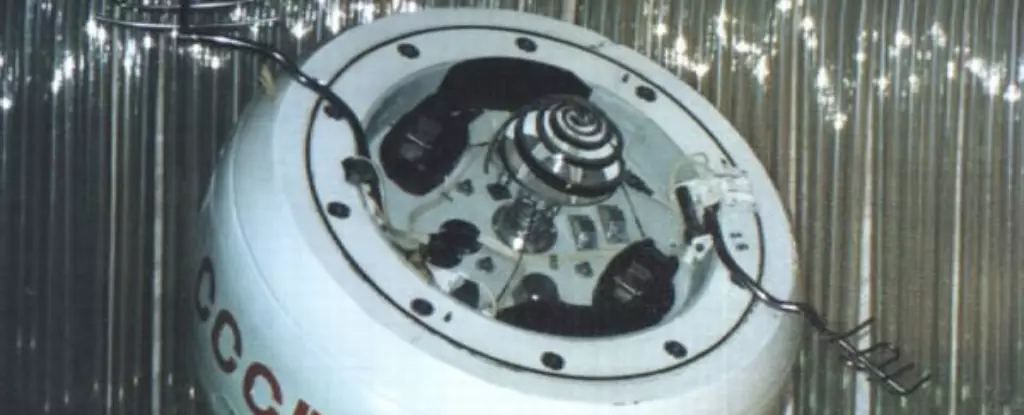The impending reentry of Kosmos-482 next month marks a poignant farewell to an artifact from a bygone space age. Launched on March 31, 1972, during the height of the Cold War, this Soviet mission has spent over half a century drifting through the cosmos. It’s a poetic reminder of the ambitious aspirations and technological challenges of an era that seems almost alien today. Kosmos-482 embodies not just the spirit of exploration but also the shadows cast by political rivalries that colored advancements in space science.
Launched from Kazakhstan’s Baikonur Cosmodrome, Kosmos-482 was likely intended for a rendezvous with Venus—a mission that echoes with the triumphs and tribulations of the Soviet Venera program. However, this mission was not destined to succeed; an unfortunate timer malfunction left it stranded in low Earth orbit. This failure was officially swept under the rug, a reflection of the secrecy and propaganda that typified the Soviet space endeavors. The mission’s designation, “Kosmos”—meaning “space”—served as a veneer of triumph, obscuring the reality of a botched launch.
Technical Missteps and Historical Footnotes
The misfortunes of Kosmos-482 only highlight the unpredictable nature of space exploration, especially during the early days. Just days before its launch, the successful Venera 8 mission showcased the Soviet Union’s capacity for interplanetary exploration. In contrast, Kosmos-482 became a case study in the sobering realities of high-stakes space missions. The satellite’s payload, which tangentially included a lander designed for Venus’s atmosphere, has remained a shadow of what might have been—a tragic reminder that for every success story in space exploration, there are countless others waiting in the void.
Despite its failure, the mission managed to shed light on the most significant issue facing current endeavors: the accumulation of space debris. As Kosmos-482 prepares for its uncontrolled reentry, it joins a long list of defunct spacecraft contributing to the increasing concern of space traffic management. We marvel at the technological successes, yet the haunting specter of space debris conversion looms large, threatening the very future of orbital exploration and utilization. The orbit of Kosmos-482, stabilized by the forces of physics for decades, serves as a reminder of how unforgiving the cosmos can be.
The Science Behind Reentry
While Kosmos-482’s reentry is fraught with uncertainty—due to both its long period of exposure to the harsh conditions of space and the age of its components—it also elicits scientific intrigue. Experts believe that the lander could survive its descent intact due to its engineering, which was prepared for the extreme conditions of Venus. This raises an engaging question: What can we learn from an obsolete vessel about the manufacture of modern spacecraft?
Marco Langbroek, a noted satellite analyst, offers a wealth of speculation on the potential outcomes of the reentry, suggesting the possibility of surviving elements hitting the Earth’s surface. The mission’s controlled yet shallow reentry might provide essential data on reentry dynamics, thus granting scientists a rare opportunity to study aging spacecraft in real-time. It’s ironic—Kosmos-482, a mission defined by failure, may yet deliver important insights as it finds its fiery end.
The Burden of Space Junk
As we gear up to witness this historical event, we can’t overlook the growing burden of space debris plaguing our orbits. The proliferation of satellites from various commercial entities—SpaceX’s Starlink, OneWeb, and Amazon’s Kuiper Project—augments the existing congestion and raises valid concerns for the safety of current satellites and future missions. With the anticipated rush toward mega-constellations, Kosmos-482’s reentry serves as a clarion call for more stringent regulations and innovative solutions to mitigate the risks posed by defunct space objects.
The notion of a “space junk crisis” isn’t merely science fiction; it is a present-day reality that demands our immediate attention. As each satellite, like Kosmos-482, completes its life cycle, it amplifies the urgency to establish coherence in international space policies. Otherwise, we risk entrenching ourselves in a grave dilemma where our aspirations to explore and utilize space are jeopardized.
Kosmos-482’s impending demise not only conjures nostalgia for a past era of exploration but also prompts serious contemplation about our trajectory in space. The echoes of history remind us that while we reach for the stars, we must be acutely aware of our responsibilities. Each legacy spacecraft that meets its fiery end forces us to reckon with the delicate balance between exploration and environmental stewardship in the infinite expanse of space.

